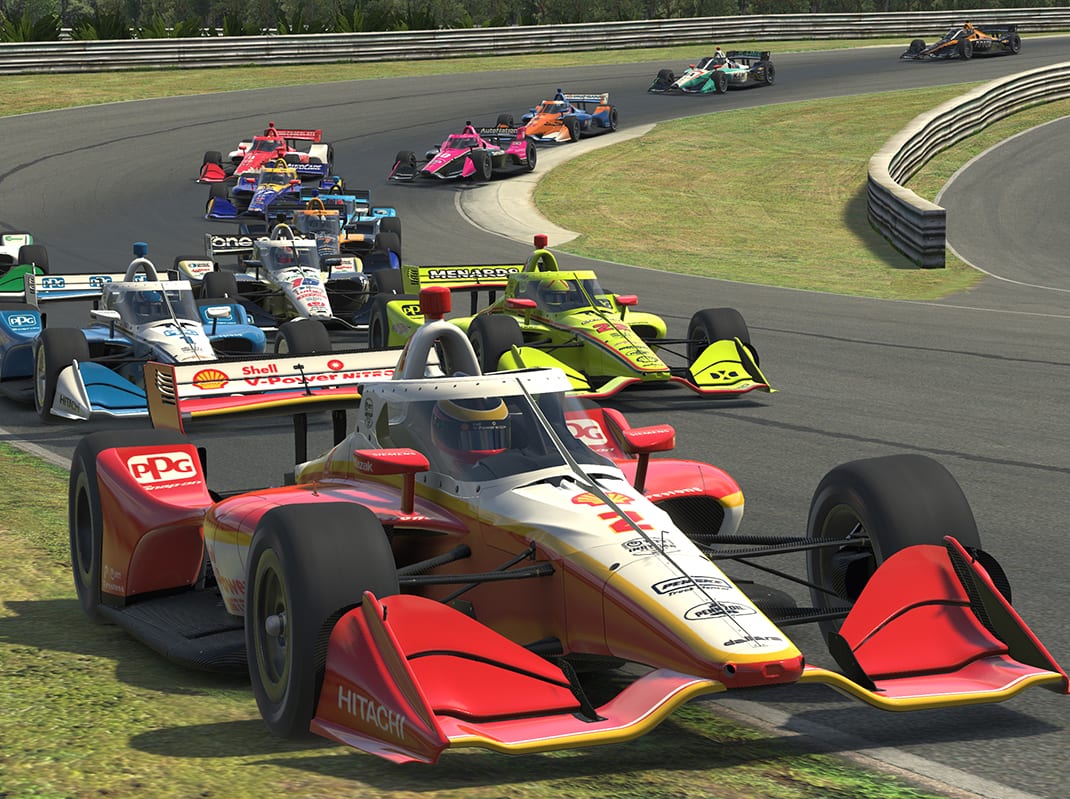When the COVID-19 pandemic began sweeping the globe and brought professional sports to a halt, questions quickly rose about ways to maintain some sense of normalcy amid the most unexpected of circumstances.
One of those questions came in the form of a text message from Eric Shanks, CEO and executive producer of FOX Sports, to Steve Myers, executive vice president and executive producer of iRacing.
The conversation that ensued not only gave life to an idea but changed the course of motorsports until racing is able to resume at tracks around the world.
Shanks’ question to Myers was if they could have a conversation about putting together some type of made-for-television iRacing content as a way for FOX Sports and its channels to have a live programming presence in the face of an unprecedented sports shutdown.
Myers’ response?
“I told him it was definitely possible,” he recounted to SPEED SPORT. “After all, we’d already been doing it for 11 years with the broadcasts of our top oval series, what’s now the eNASCAR Coca-Cola iRacing Series.”
Thus, began an interesting journey for iRacing, the leading online motorsports simulation service in the world, from its solidly established position in the esports space to an even larger place in the industry.
iRacing suddenly became the answer to a gaping programming void for the television networks, as well as an immediate form of entertainment for starved audiences.
“We knew that (entertainment) was a need and we were both prepared and excited to be able to help fill that need,” Myers explained. “When I texted Eric (Shanks) back, I told him the good news was that we already pretty much had (a plan) sketched out for him and that night I pitched him the idea of the Pro Invitational for NASCAR as a point we could start from. It was just the technical things, really. As I said before, we’d been doing (iRacing) broadcasts for 11 years, so it’s not like we had to ramp up the ability to do the broadcast portion of it. We didn’t have to convince a bunch of drivers to try iRacing for the first time, either, because a lot of those guys were already doing it.
“We already had most of the pieces in place; it was just a few things to get it to what everyone has been seeing now.”
The main piece to the TV puzzle revolved around transmission of the broadcast from iRacing’s studio in Chelmsford, Mass., to the FOX (and later NBC) Sports studios in other parts of the country.
But even that, Myers noted, was resolved fairly easily.
“It was just a matter of getting our broadcast room talking with the Charlotte and L.A. broadcast rooms to get the actual races to them (FOX) to be able to put the TV aspects onto it,” he explained. “Probably 90 percent of these broadcasts are coming out of our broadcast room and it’s just FOX putting the treatments on it with the bumpers, the videos and the talent.
“Everything else is coming from us though.”
The man in charge of everything coming out of iRacing’s broadcast studio is also the main cog in making sure everything fans see on their televisions at home is as seamless as possible.
That man is 27-year-old Drew Adamson, a Ball State University alumnus who serves as the broadcast director and media producer for iRacing and has headed up virtually all of the major-league events that have been put on by iRacing and the major North American sanctioning bodies since mid-March.
Without Adamson, none of the magic happens.
That’s a hefty weight on his shoulders, but Adamson’s job is one that he relishes and holds a deep passion for.
After all, Adamson is the son of longtime Turner Sports media executive Michael Adamson, and he spent his youth picking apart NASCAR broadcasts during the era in which Turner oversaw NASCAR.com.
“I do enjoy it,” Adamson said. “I’ve been watching Mike Joy and Larry ‘Mac’ (McReynolds) since I was a kid. I had a moment of giddiness when I realized that first broadcast was going to be on FOX. But it was kind of like when athletes play in the Super Bowl or World Series. You soak up the moment, but you have to treat it like any other game if you’re going to do it right.
“Psychologically, I really don’t do anything different for 1 million viewers than what I do for 100, because the numbers don’t faze me,” he added. “My goal is just to put on the best show possible.”
Click below to keep reading.
